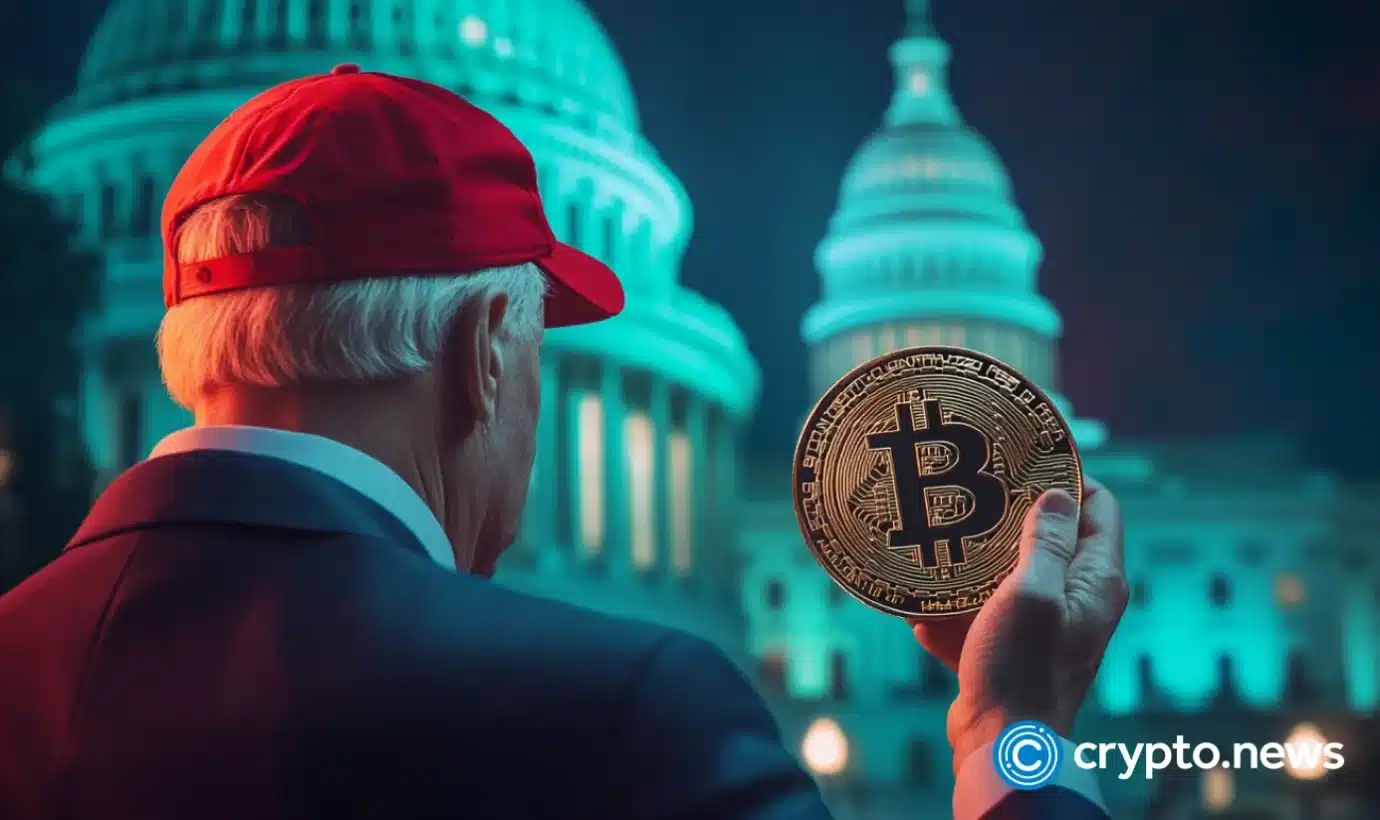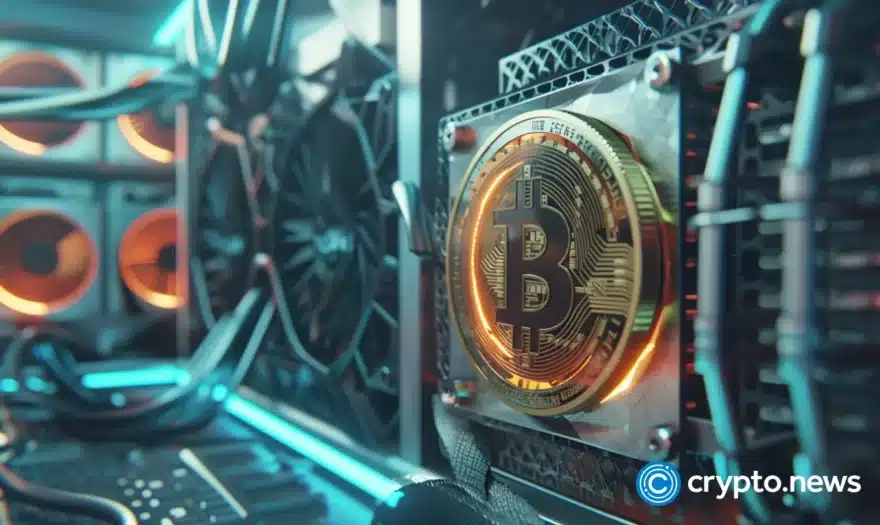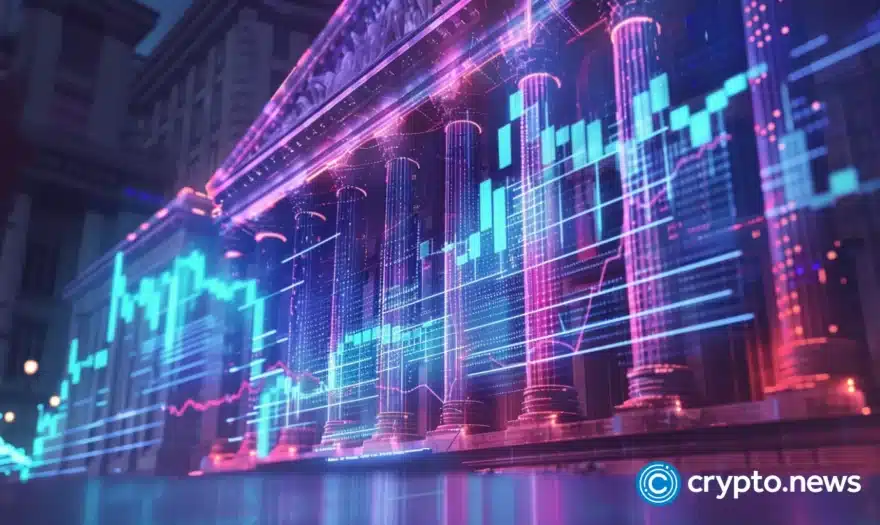Markets surge on Trump’s tariff pause — but Bitcoin’s recovery may not hold

After steep drops, can Bitcoin and equities build a base from here, or is the tariff pause just a pause, with China tensions still ready to reignite?
Table of Contents
Trump hits pause
On Apr. 9, President Donald Trump posted an unexpected update on Truth Social, temporarily walking back one of the most aggressive trade policies in recent memory.
In a brief yet impactful message, he announced a 90-day suspension of reciprocal tariffs affecting over 75 nations, replacing them with a streamlined 10% flat rate — China being the only exception.
The announcement came after a turbulent week in the markets, marked by sharp volatility triggered by initial tariff hikes that ranged from 11% to as high as 50% across a wide range of U.S. trading partners.
Mounting political pressure, financial market instability, and diplomatic unease appear to have influenced the White House’s decision. Several trade partners had warned that the abrupt escalation in tariffs risked tipping the U.S. toward a recession.
According to Treasury Secretary Scott Bessent, the original tariffs were always designed as a strategic “leverage.” In that sense, he noted, they had served their purpose.
More than 70 countries have now opened trade discussions with Washington, while key allies such as Japan and the EU have expressed a willingness to negotiate.
Yet, while most nations were offered a temporary reprieve, China remains an outlier. Rather than easing its stance, the Trump administration raised tariffs on Chinese goods from an already punishing 104% to a staggering 125%.
The escalation came in response to China’s own retaliatory measures, which included an 84% tariff on American imports. With neither side backing down, the U.S.-China trade confrontation now appears to be entering a more deeply entrenched phase.
In response, Citi revised its 2025 GDP growth forecast for China, lowering it from 4.7% to 4.2%, citing rising trade uncertainty as a key factor.
Let’s unpack how markets have reacted to this abrupt policy pivot, what it reveals about current economic sentiment, and where digital assets like Bitcoin (BTC) might be headed in the near future.
Wall street reclaims lost ground
In an exclusive conversation with crypto.news, RabbitX CEO Ming Wu said the pause on tariffs marks a shift in trade policy and has already helped calm investor fears about a wider economic fallout.
“The prolonged downtrend led many traders to take short positions. The unexpected tariff pause likely triggered a short squeeze, forcing short sellers to buy back shares to cover their positions, thereby amplifying the upward momentum. Markets responded with broad optimism following Trump’s announcement, offering investors a welcome reprieve from the uncertainty that had gripped sentiment throughout the previous week.”
In the U.S., equity indices surged across the board. The S&P 500 jumped 9.52%, logging its strongest single-day gain in over 16 years. The Nasdaq Composite climbed 12.16%, its most impressive rally since early 2001, while the Dow Jones Industrial Average rose 7.87%, adding nearly 3,000 points.
These gains helped claw back a sizable portion of the trillions in market value that had been wiped out over the prior four trading sessions, much of it due to fears surrounding the economic impact of the tariff escalation.
Amid the rally, Goldman Sachs, which had previously warned of a rising recession risk, withdrew its forecast in light of the policy reversal.
Positive momentum extended into Asian markets as they opened on Apr. 10. Japan’s Nikkei leapt over 9%, bouncing back sharply from a 4% decline the previous day. South Korea’s Kospi rose 6.6% after having briefly entered bear market territory earlier in the week.
Hong Kong’s Hang Seng also staged a recovery, rising 2% after suffering its worst drop since 1997, a 13% plunge, but sentiment remained guarded due to the region’s heightened exposure to trade flows.
In Europe, markets moved in sync with the global rebound. The EURO STOXX 50 climbed nearly 6% during the day’s session, bolstered by the European Union’s earlier move to approve retaliatory tariffs, followed almost immediately by Trump’s pullback.
European Commission President Ursula von der Leyen welcomed the U.S. decision, calling it a “stabilizing step” and signaling a broader willingness to return to the negotiating table rather than deepen the trade dispute.
Crypto markets reflected a similar uplift. BTC rose more than 6% in the 24 hours following the news, reaching around $81,650 as of writing on April 10. The rebound followed a steep drop during the initial tariff rollout, when Bitcoin had slipped 10% to around $74,500.
While the recovery helped recapture some lost ground, BTC remains down 13% year-to-date and roughly 25% below its all-time high — suggesting that the move was more a short-term relief rally than a broader trend reversal.
The global crypto market cap rose in tandem, increasing from $2.38 trillion earlier on Apr. 9 to approximately $2.6 trillion as of this writing — an addition of about $220 billion in the last 24-hours.
Digital asset-linked stocks have also joined the rally. MicroStrategy (MSTR) soared nearly 25%, Coinbase (COIN) added around 17%, and Robinhood saw gains of about 24%.
Grayscale’s Zach Pandl noted that persistent trade tensions, particularly between the U.S. and China, could weigh on the U.S. dollar and stoke inflationary pressures.
Inflation, liquidity, and a dollar dilemma
The trade dispute between the U.S. and China continues to deepen, and that carries stark implications for the global economy, and for crypto markets that increasingly reflect macro sensitivities.
According to the World Trade Organization, prolonged trade friction between the two largest economies could reduce bilateral trade in goods by up to 80%.
While the U.S. and China together account for roughly 3% of global trade volume, their influence goes far beyond that, shaping supply chains, pricing power, and currency dynamics across both developed and emerging markets.
If tensions were to evolve into a more permanent divide, what some analysts call a “two-bloc world”, the global economy could see a 7% decline in long-term real GDP as per WTO. In that sense, the Apr. 9 market rally reflects a sense of relief, not resolution.
Meanwhile, Bitcoin’s 7% climb paralleled gains in equities, pointing to a continued connection between crypto and broader risk sentiment. With its correlation to equities now hovering around 0.7, Bitcoin is no longer moving entirely on its own fundamentals.
The inflation outlook adds another layer. U.S. inflation is projected to stay between 2.8% and 3% in the coming months, with G20 inflation edging closer to 4%.
Amid this, a stronger dollar could put pressure on emerging market currencies, contributing to imported inflation in several regions.
For crypto, this creates an unusual mix. On one hand, inflation risk often draws attention to Bitcoin as an alternative asset. On the other, a stronger dollar and tighter global liquidity tend to reduce speculative appetite, especially in emerging markets where crypto adoption often plays a more practical, value-preserving role.
Policy responses are also in flux. The Federal Reserve has paused its rate-cut plans, citing inflation concerns, a move that limits the availability of cheap capital in the short term.
Meanwhile, global money supply growth (M2) remains moderately supportive, but that cushion could fade by mid-year if inflation persists.
If rate cuts are pushed into Q3 or beyond, and U.S. Treasury yields stay near current levels (around 4.3%), growth assets across the board, including crypto, could face renewed pressure.
A rally on thin ice?
Despite Bitcoin’s sharp rebound following the tariff pause, analysts remain divided on what comes next.
From a technical perspective, traders are closely watching the $83,000 to $85,000 range as a near-term test for Bitcoin. According to market analyst Daan Crypto Trades, this zone aligns with the 4-hour 200 moving average, a level that has repeatedly pushed back price attempts over the past couple of weeks.
“That $83,000 to $85,000 is a key level to overtake for the bulls,” he wrote, noting that if Bitcoin slips back below $81,100, where there has been strong trading activity, it could signal a false breakout or a liquidity grab.
Looking at the bigger picture, some market observers remain skeptical that the current rally marks the beginning of a sustained uptrend. Jeff Park, head of Alpha Strategies at Bitwise, believes macroeconomic conditions are still too fragile to support a meaningful shift.
He points to lingering structural pressure from the 10% tariffs, a persistently elevated 10-year Treasury yield above 4%, and credit spreads that remain wide at over 400 basis points.
These, he argues, reflect a market where liquidity is still thin. “It’s actually more concerning how little liquidity is in the market to experience casino swings like this,” he said.
Through that lens, short-term rallies may not signal true strength. Instead, they could simply reflect volatility amplified by fleeting headlines and shallow order books rather than deeper structural support.
Meanwhile, widely followed trader Edward Morra believes the market is still in bearish territory. “We are in a bear market. Unfortunate, but it’s undeniable,” he said. In his view, the recent bounce should not be trusted unless Bitcoin can decisively break above $94,000 and hold that level.
He also notes a troubling lack of interest in altcoins. Many, he says, are failing to draw meaningful capital. “Most strong ones are about to print a complacency shoulder,” he warned, suggesting that some tokens may still be stuck in accumulation zones, or worse, on a slow path toward delisting or neglect.
In the near term, the key levels to watch are both technical and policy-related. Bitcoin holding above $81,000 offers a base to build on. Sustained movement beyond $85,000 could bring in momentum buyers, while any pullback might test recent support.
On the macro front, any progress in trade negotiations, signs of easing inflation, or clearer guidance from the Federal Reserve could help crypto find more stable footing.
For now, this remains a market that demands both curiosity and caution. Trade wisely, and never invest more than you are prepared to lose.
Disclosure: This article does not represent investment advice. The content and materials featured on this page are for educational purposes only.















